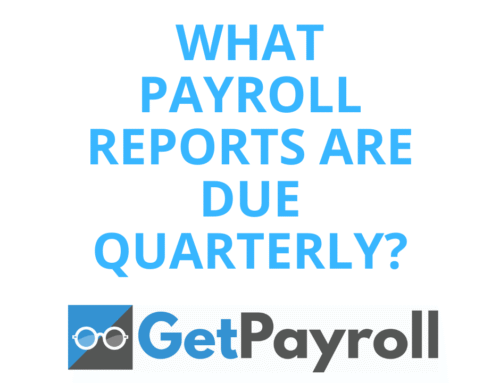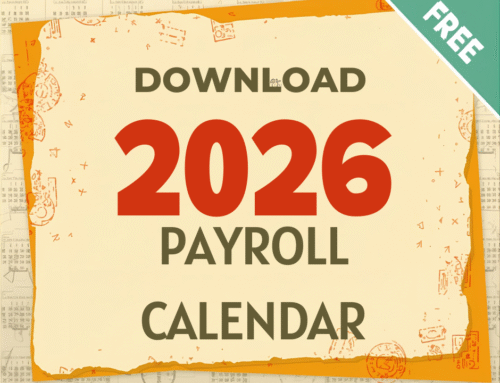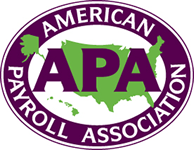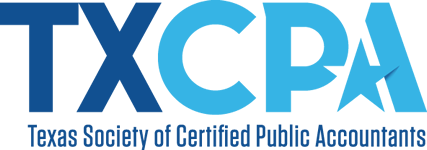
Charles Read, CPA, USTCP, IRSAC
President/CEO GetPayroll
Find me on LinkedIn
WORKWEEK
The federal government through the Fair Labor Standards Act (FLSA) sets the standard workweek at 168 continuous hours. Seven consecutive 24-hour periods. This is a predefined period, and the employer can set when it starts. It can be from midnight Saturday to midnight Saturday or it can be 9:15 Monday morning to 9:15 Monday morning, but it must be seven days straight. This is so you can figure overtime mandated under the FLSA. Even if you pay every two weeks, you have to figure over time for both of the 168-hour weeks separately.
If you pay your employees semimonthly, you make figuring overtime more difficult because you will have periods of time that can overlap at the beginning or end of a regular workweek. Say your workweek is from Sunday through Saturday but your pay period is the first of the month through the 15th and the 16th through the last day of the month.
Let’s take the month of March 2019 as an example. March 16 (a Saturday) falls into the workweek of March 10 through March 16. Then, the next seven days into the workweek of March 17 through March 23, the following seven days into the workweek of March 24 through March 30 and then the 31st falls into the next workweek of March 31 through April 6. This means you have to keep looking forward and backward to see if there are more than 40 hours in a workweek that have to be paid as overtime in a pay period.
If you use a biweekly schedule you can combine the two workweeks into one 14-day pay period. You still have to calculate the overtime for each workweek separately.
If you have a weekly pay period, and some states may still require some weekly payrolls, then your workweek and pay period should coincide and any overtime is very simple to figure.
Once the beginning time of an employee’s workweek is established, it remains fixed regardless of the hours the employee is scheduled to work. However, the beginning time of the workweek may be changed if the change is intended to be permanent and is not designed to evade the overtime requirements.
PAY FREQUENCY (PAY PERIOD)
The pay period is the period of time that you collect pay for or how often you pay your employees. The normal pay periods are:
- Monthly
- Semimonthly
- Biweekly
- Weekly
- Daily
Quarterly and annual pay periods are used occasionally in very special circumstances. In most cases, you are required to pay at least monthly and, in some cases, more often than that. Here is a link to a chart showing the state-by-state requirements for pay frequency: www.dol.gov/whd/state/payday.htm.
We recommend where possible that you pay on a biweekly basis. Monthly is not available in many cases for employees that are subject to overtime provisions of the FLSA or the states.
Biweekly should be two full workweeks. You can calculate any overtime in each workweek and include it all on the payment for that pay period. It cuts down the number of payrolls you have to run from 52 if weekly to 26. It may well cut down on the number of deposits you have to make to the government. It helps improve cash flow for the business. It is well accepted in most industries. It is a good balance between cost and convenience.
PAYDAY
Different states have different payday requirements. They are available on the same link as above for pay frequency requirements. FLSA requires that you pay your employees for work they have done but does not set when you must pay them; that is left to the states to determine.
I suggest at least five days between the last day of the pay period and the actual payday. Seven is even better. I like to suggest to new clients that they consider a two-week pay period ending on Friday, with payday the following Friday. This eliminates a lot of problems. It gives you time to work around holidays without jumping through hoops. If the person doing payroll is sick for a day or two, it does not pose a problem. It just makes life easier than trying to figure payroll today for a check date of tomorrow.
Interested in learning more about GetPayroll services?
Are you shopping for new payroll services? Schedule a demo to see if GetPayroll is right for your business.
If you are a current GetPayroll customer (yay!), take a look at some of our new services that may help streamline your business operations.
Comments and Suggestions
Don’t forget to leave us a comment below and tell us what you think. If you have any requests or suggestions, we’d love those too!










